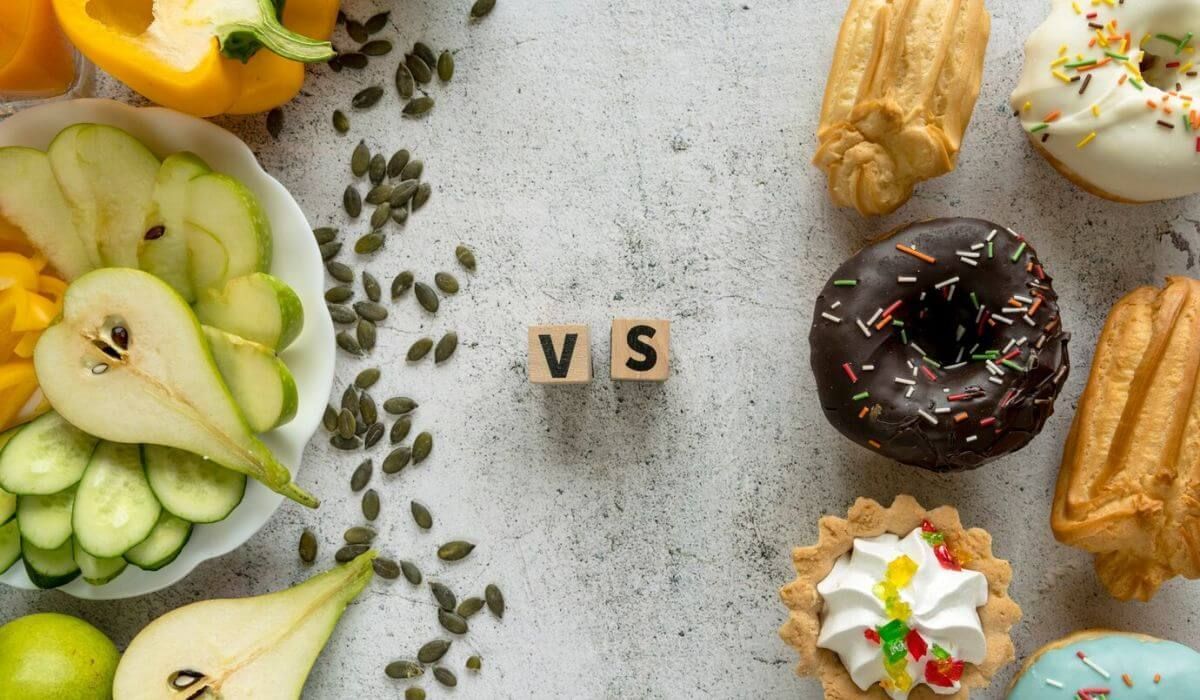When it comes to food, everyone has a preference. Some lean toward indulgent desserts, while others crave the robust satisfaction of savoury dishes. But why do these preferences matter? Taste shapes not only what we eat but also how we experience food.
Sweetness brings comfort and nostalgia, while savoury flavours are often associated with richness and warmth. Understanding these distinctions can help you balance your meals, cater to guests, and expand your culinary horizons. Whether you're choosing a snack or planning a gourmet dinner, the sweet vs. savoury debate is always relevant.
Sweet vs. Savoury: Key Differences
Flavor Profiles
Sweet: Sugary, Mild, and Rich
Sweet dishes are characterized by their sugary, creamy, or fruity flavours. Think of the melt-in-your-mouth sensation of a chocolate cake or the fresh sweetness of ripe strawberries. These flavours evoke feelings of comfort and indulgence, often satisfying cravings for something rich and rewarding.
Savoury: Spicy, Salty, and Robust
Savoury foods, on the other hand, are defined by their bold and hearty flavours. Salty chips, spicy curries, and herb-infused roasts offer a satisfying depth that keeps you coming back for more. Unlike sweet foods, savoury dishes often feature umami—a flavour profile that adds richness and complexity. You can refer to our
savoury catering ideas service if needed.
Ingredients and Preparation Methods
Common Ingredients in Sweet Dishes
Sweet recipes typically rely on ingredients such as sugar, honey, chocolate, cream, and fruits. These components are often prepared through baking, freezing, or blending to create smooth textures and balanced sweetness. Think of a layered tiramisu or a refreshing sorbet.
Typical Ingredients in Savoury Dishes
Savoury dishes incorporate ingredients like meats, cheeses, vegetables, and a variety of spices or herbs. Techniques such as grilling, roasting, and sautéing enhance the umami and salty profiles that define savoury meals. For instance, grilling marinated chicken or slow-roasting root vegetables develops depth and complexity.

Choosing Between Sweet or Savoury
Factors Influencing Taste Preferences
Cultural Background
Culture plays a huge role in shaping our preferences. In Western countries, sugary
desserts platters for events like cakes and cookies dominate the end of meals, while in many Asian cultures, sweetness is more subtly integrated, as seen in dishes like sweet-and-sour pork. Understanding these cultural nuances can help you appreciate why certain flavours resonate more strongly with some individuals than others.
Time of Day (Breakfast, Snacks, Dinner)
Timing also influences taste preferences. Mornings often favour sweetness, with options like pancakes, muffins, or fruit smoothies, providing quick energy. Lunch and dinner lean toward savoury profiles, featuring hearty meals like soups, sandwiches, or pasta. Meanwhile, snacks could swing either way, catering to cravings or mood.
How to Balance Sweet and Savoury
Incorporating Both in a Single Meal
One way to elevate a dining experience is to balance sweet and savoury in the same meal. For example, pairing a savoury main course like grilled salmon with a touch of sweetness, such as a honey glaze, creates harmony. Adding sweet roasted nuts to a salad is another way to achieve this balance.
Fusion Recipes (e.g., Sweet and Savoury Pies)
Fusion cuisine offers endless opportunities to combine sweet and savoury flavours. Dishes like salted caramel tarts or prosciutto-wrapped melon showcase how these two profiles can work together seamlessly. Experimenting with recipes that blur the lines between sweet and savoury can result in unforgettable meals.
Sweet and Savoury Pairings
Popular Sweet and Savoury Combinations
Salted Caramel Desserts
The classic pairing of salt and caramel creates a perfect balance between sweetness and a hint of saltiness. This combination enhances the caramel’s rich, buttery notes, making it a favourite for desserts like salted caramel brownies or ice cream.
Cheese and Honey Pairings
Pairing cheeses like brie or blue cheese with honey, fruit compotes, or figs is a staple in fine dining. The sharpness of the cheese is mellowed by the sweetness, resulting in a sophisticated flavor profile.
Tips for Creating Balanced Dishes
Using Contrast to Enhance Flavors
Balancing flavours is all about contrast. Pairing salty with sweet or spicy with mild enhances the tasting experience.
Avoiding Overpowering Ingredients
Be mindful of the intensity of flavours. Too much sweetness can overwhelm a dish, while excessive salt can mask other flavours.

Sweet or Savoury in Different Contexts
Sweet or Savoury Breakfast Choices
Breakfast sets the tone for the day, and preferences can differ widely. Sweet options like waffles, pancakes, or yogurt parfaits are comforting and energizing, while savoury choices such as scrambled eggs, avocado toast, or smoked salmon bagels offer sustenance and flavour.
Sweet or Savoury Snacks
Snacks are highly versatile and depend on personal preferences or occasions. Sweet snacks, like energy bars or cookies, cater to cravings, while savoury options like popcorn, roasted chickpeas, or cheese crackers provide a satisfying, nutrient-dense alternative.
Sweet or Savoury Event Catering
When it comes to event catering, offering a mix of sweet and savoury ensures you cater to all guests. For example, savoury hors d’oeuvres like mini quiches or sliders can be paired with sweet treats such as macarons or tarts for a balanced spread.
Sweet or Savoury for Dietary Preferences
Healthier Sweet Options
Low-Sugar Desserts
Many desserts can be made healthier by reducing sugar or substituting it with alternatives like stevia, monk fruit, or coconut sugar. These options retain sweetness without compromising health.
Natural Sweeteners
Using natural ingredients like dates, maple syrup, or mashed bananas in recipes can add sweetness while providing nutritional benefits.
Healthier Savoury Options
Low-Sodium Recipes
Reducing salt doesn’t mean sacrificing flavour. Herbs, spices, and citrus can enhance savoury dishes without adding excess sodium.
Grilled or Roasted Snacks
Instead of fried options, try roasted chickpeas, baked kale chips, or grilled zucchini slices for a healthier savoury snack.

FAQs
What is considered savoury food?
Savoury foods are typically salty, spicy, or umami-rich, including dishes like soups, stews, and roasted meats.
Can a dish be both sweet and savoury?
Yes, fusion dishes like teriyaki chicken or salted caramel brownies blend sweet and savoury flavours for a unique taste experience.
What are the healthiest sweet and savoury options?
Healthier sweet options include low-sugar desserts and fresh fruit, while savoury options feature low-sodium, grilled, or roasted dishes.
How do you decide whether to serve sweet or savoury at events?
Consider the time of day, guest preferences, and the event’s theme. A mix of both ensures everyone has something to enjoy.




